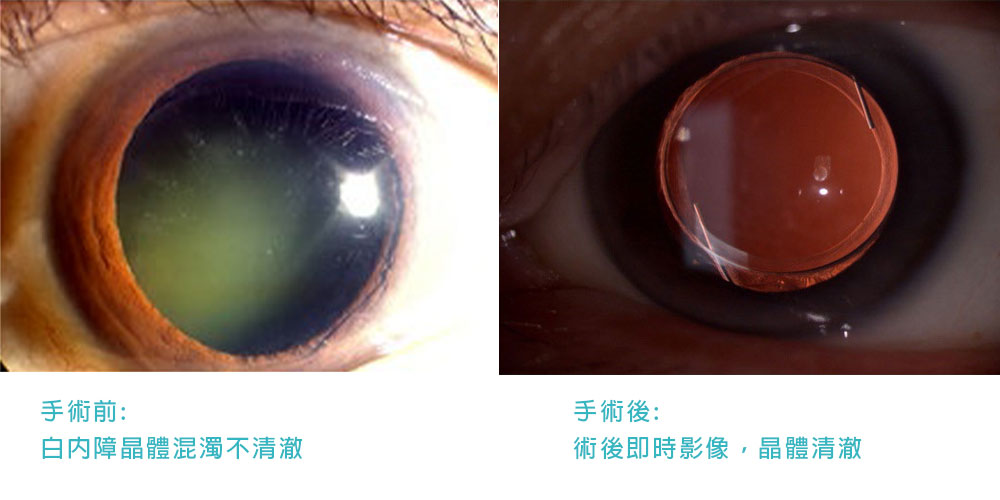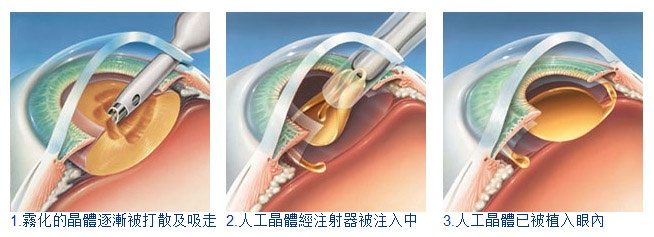What is cataract
The lens in the eyeball is clear and transparent. Its function is to focus light on the retina to form a clear image, just like the principle of a camera lens. If the lens becomes cloudy, it will block some or all of the light from passing through, causing blurred vision. This condition is called "cataract".
What are the symptoms of cataracts?
Patients may experience blurred vision, double vision, photophobia, frequent changes in the prescription of glasses, and the need to change glasses; they may also feel that light is scattered or halos appear around them, and the color vividness and contrast of images are reduced.
Causes of cataracts
There are many reasons for the formation of cataracts. The most common is the natural aging of the lens with age. Others include congenital factors such as genetics, infection, glaucoma, diabetes, severe myopia, etc. In addition, long-term use of steroids, exposure to sunlight, and smoking can also cause cataracts to appear early.
Prevention of cataracts
So far, there is no way to prevent cataracts caused by aging, because it is a natural degeneration process of the eyes; but the early onset and deterioration of cataracts can be prevented, such as:
- Wearing glasses or sunglasses that block UVA/UVB
- Diabetic patients should control blood sugar well
- Pay special attention to eye safety when working or exercising to prevent trauma and cataracts
- Eat a balanced diet and avoid smoking
- Have regular eye examinations
Regular eye examinations are important anyway. Your ophthalmologist will tell you whether it is cataracts or other eye diseases that cause vision loss, and help you decide whether to undergo cataract removal surgery.
Treatment of cataracts
Currently, there is no drug that can treat cataracts. The only most effective method is to use "minimally invasive ultrasonic emulsification cataract surgery" or the latest "femtosecond laser cataract surgery" to remove the cloudy cataract and insert a foldable or artificial lens. As for when patients should undergo surgery, it depends on whether their vision affects their daily life or work. With today’s advanced medical technology, cataract surgery is a very safe and effective permanent treatment for cataracts. It is not advisable to wait until the cataract is “mature” to undergo surgery, as this will increase the risks of surgery.
Treatment method 1
"Minimally invasive ultrasonic emulsification cataract surgery" has a wound of only 2-3 mm. It uses an ultrasonic probe to melt and suck out the cataract, and then inserts a soft and foldable artificial lens. The wound is extremely small. The whole operation only takes about 10 minutes. No injections or stitches are required. It is performed under topical anesthesia, only anesthetic eye drops are needed, and no hospitalization is required.

Treatment method 2
"Femtosecond laser cataract surgery" is the latest technology. Before the operation, the doctor uses the "Femtosecond laser cataract surgery instrument" to scan the patient's eyes, and then reconstructs the eye image with 3D technology to understand the patient's eye shape and lens position, and tailor a surgical plan for the patient. Improve the accuracy of the operation. However, it is more expensive than traditional cataract surgery.
Precision femtosecond laser can perform the following surgical procedures:
. Continuous circular capsulotomy: The 3D model will guide the laser to make a precise circular incision
. Phakic nucleus fragmentation: Doctors can tailor a surgical plan for each patient based on the maturity of the cataract.
The doctor uses femtosecond laser technology instead of a scalpel to make the incision more perfect, create an ideal round anterior lens capsule, break up the cloudy lens, and then use ultrasound to remove the cataract and insert an artificial lens. Since the time the patient is exposed to ultrasound to break up the lens is shortened, the chance of corneal cell damage is reduced.
Cataract surgery instructions
Surgery day
- If you have chronic diseases such as high blood pressure, diabetes, heart disease, or are allergic to medication, please inform your doctor
- If you are taking medication for a long time, please take your medication as usual. If you take Aspirin or other blood thinners, such as WARFARIN and PLAVIX, please inform the doctor. You may need to stop taking them a few days before the surgery.
- If you have a cough or cold, please inform the center as soon as possible.
- Please clean your hair and face thoroughly, change clean sheets and pillowcases, and do not apply eye makeup.
- If the surgery is performed with local anesthesia, you do not need to fast, but do not eat too much.
- Do not wear overhead clothing or slippers. If you have dentures or earrings, please remove them first.
- Please arrange for relatives or friends to accompany you home to rest after the surgery.
During the surgery
- Local anesthetic eye drops will be instilled for you.
- Keep your hands by your side during the surgery.
- The face will be covered with a sterile cloth, but oxygen will be supplied.
- The head should not be moved. If you suddenly need to cough, please inform the doctor first.
Complications are not common and most can be effectively cured. Only a small number of patients require further medical treatment or re-surgery (local or general anesthesia). A very small number of complications may lead to blindness:
Possible risks and complications
- Tearing of the posterior lens capsule, affecting the vitreous body in the eyeball, may cause vision loss
- Part or all of the lens (cataract) falls into the posterior chamber of the eye
- Intraocular bleeding
- Cannot implant an artificial lens
- Bacterial infection is a very rare complication
- Corneal opacity or edema
- Wound rupture
- Increased pressure in the eyeball
- Retinal detachment
- Incorrect or displaced artificial lens
- Sometimes after a successful operation, the posterior capsule becomes cloudy after a few months or years, which causes vision loss again. Laser treatment may be required to restore clear vision
- If the patient has undergone corrective surgery before, the degree of the artificial lens may be deviated. If the deviation is large, a lens replacement surgery may be required
What to do after the operation?
1. Rest more on the day of the operation and do not do strenuous exercise
2. You can walk naturally on the second day after the operation, such as morning exercise, and do moderate exercise for a week.
3. The most important thing is to keep your eyes clean and hygienic. Do not rub the eye that underwent surgery.
4. If you need to use eye drops for several weeks, remember to clean your hands before applying the drops.
5. Do not wash your hair yourself within three days. You can wait to visit a hair salon.
6. Do not let unclean water come into contact with your eyes within one week, but you can swim after one month.
7. If you experience sudden severe pain, redness, swelling, or sudden decrease in vision, you should see a doctor as soon as possible.
When will normal vision return?
The day after surgery, most patients' vision returns to normal. However, for patients with diabetes, glaucoma or retinopathy, even if cataract surgery is successful, there will be limited improvement in vision quality.
Do I need to wear glasses after the surgery?
Whether you need to wear glasses depends on the function of the artificial lens implanted. You can discuss with your ophthalmologist and make a choice according to your lifestyle. Basically, myopia, hyperopia and astigmatism can be improved. As for solving the problem of presbyopia, there are two options. One is to choose a "multifocal artificial lens". Most patients who do not have high requirements for vision may not need to wear glasses, but not everyone can adapt. The other method is to implant "monofocal artificial lenses" of different degrees in both eyes. Through the division of labor and coordination of both eyes, you can obtain good vision for both near and far distances. However, you need a "monofocal artificial lens" with a fixed focus for long distances, and you need to wear reading glasses when reading.


